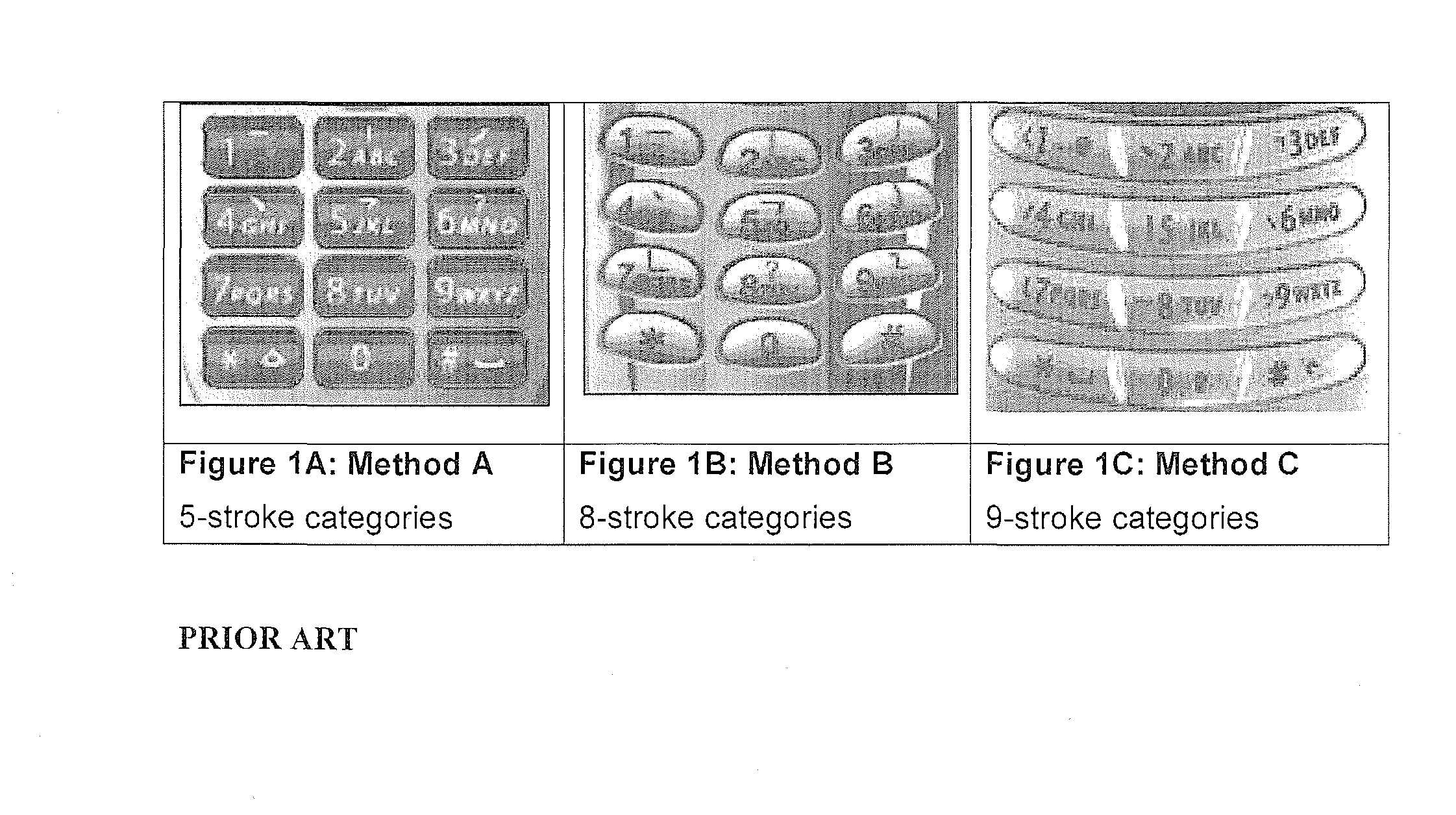Separation of Components and Characters in Chinese Text Input
a technology of components and characters, applied in the field of user interfaces, can solve the problems of confusing displaying both components and characters together, not using components, and affecting the user's learning of components, so as to reduce confusion and facilitate user learning the effect of using components
- Summary
- Abstract
- Description
- Claims
- Application Information
AI Technical Summary
Benefits of technology
Problems solved by technology
Method used
Image
Examples
Embodiment Construction
[0019] As illustrated in FIG. 3, in one embodiment of the present invention, components 101 and characters 103 are separated on a user interface 105, such that a separate component selection list 102 and a separate character selection list 104 are displayed. For example, as illustrated in FIG. 3, the components 101 are displayed in a separate row above the characters 103. As will be understood by those of ordinary skill in the relevant art in light of this specification, components 101 and characters 103 can be separated in other ways as well, for example by displaying the components 101 under the characters 103, or in separate columns or boxes, etc.
[0020] As illustrated in FIG. 3, a current entered stroke sequence 107 is shown on the interface 105 (for example, the illustrated sequence 107 is made up of two strokes 110). The separate listings 102, 104 of both components 101 and characters 103 are filtered such that only those that match the stroke sequence 107 are displayed. If th...
PUM
 Login to View More
Login to View More Abstract
Description
Claims
Application Information
 Login to View More
Login to View More - R&D
- Intellectual Property
- Life Sciences
- Materials
- Tech Scout
- Unparalleled Data Quality
- Higher Quality Content
- 60% Fewer Hallucinations
Browse by: Latest US Patents, China's latest patents, Technical Efficacy Thesaurus, Application Domain, Technology Topic, Popular Technical Reports.
© 2025 PatSnap. All rights reserved.Legal|Privacy policy|Modern Slavery Act Transparency Statement|Sitemap|About US| Contact US: help@patsnap.com



